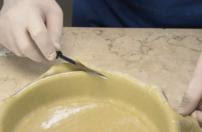Elegant, precious, unique, fun, romantic: this is
Venice, jewel of the Italian tourist scene. Here churches, palaces, ancient bridges, monuments and squares, tell the tale of great artistic and cultural vibrancy that marked and still marks the history of this city.
The heart of Venice is the beautiful
Piazza San Marco, the most elegant drawing room of Europe, surrounded by works of unquestionable value: the imposing bell tower and the Basilica with its five portals decorated with marble and mosaics anticipate the luxury and richness of the interiors. The Palazzo Ducale, symbol of the golden times of the Serenissima, as Venice used to be called, the Mori Tower, better known as the Clock Tower, a masterpiece of engineering that has been keeping the time in Venice for centuries. Nearby is Campo Santo Stefano with the homonymous church, one of the largest in Venice.
From the square the island of San Giorgio Maggiore is visible together with the high bell tower that rises from the monumental complex of the former Benedictine Monastery, a masterpiece of the great architects of the period including the famous Andrea Palladio.
A true open-air museum, visited by boat or gondola along the
Grand Canal, the main "road" of Venice, which starts at the Punta della Dogana, the ancient port of Venice with its distinctive triangular shape, today used, together with Palazzo Grassi, as Center for Contemporary Art. Do not miss the Peggy Guggenheim Collection, Palazzo Venier de'Leoni, the most prestigious collection of works of art of the Twentieth century.
Further along are other important museums: the Accademia Galleries, hosted by the School of the majestic Grand Charity of the same name, that includes the church and the monastery and the Ca' Rezzonico, one of the most beautiful Renaissance buildings housing the Museum of the Venetian Eighteenth century.
On the right side of the Grand Canal, also accessible through the
Rialto Bridge, you arrive in the area of the districts of San Polo, Santa Croce and Dorsoduro where some of the most famous "campi" of Venice can be found surrounded by beautiful religious buildings and palaces: San Rocco, where there is one of the great schools of ancient Venice and the church dedicated to the same saint; the famous Basilica Santa Maria Gloriosa dei Frari, one of the most important Franciscan buildings; San Polo and San Giacomo dall'Orio with the homonymous church in the center decorated with beautiful works of Renaissance Venice; San Sebastian masterfully decorated by Paolo Veronese; San Pantalon and San Nicolo dei Mendicoli with one of the oldest churches in the city and Santa Maria della Salute.
From Piazza San Marco, across the famous
Bridge of Sighs (
Ponte dei Sospiri), which offers wonderful views of the lagoon, you arrive in the Castello district, rich in architectural and artistic masterpieces. It is known that the "campi" of Venice are the historic squares, often adorned by important monuments in the center and dominated by the imposing and magnificent religious buildings from which they are named. In this district there are very interesting examples: the church of Santi Giovanni e Paolo, where state funerals are carried out; the church of Santa Maria dei Miracoli, a splendid example of Renaissance architecture; the church of San Zaccaria and the church of San Giovanni in Bragora, considered by many one of the most beautiful churches in the city, and the church of Santa Maria Formosa born from a project of Codussi.
Continuing to walk through the streets of Venice, do not miss a visit to the largest Arsenal in the world, built in the Twelfth century and later enlarged by the great political and commercial development at the School of Venice and San Giorgio degli Schiavoni with some of the finest works of Carpaccio.
Cannaregio is located the Campo della Madonna dell'Orto, one of the few remaining examples of ancient flooring in a herringbone pattern, on which the homonymous church decorated by the great Tintoretto and the Scuola dei Mercanti are located.
Another magnificent example of Renaissance architecture is the Church of St. John Chrysostom, the last work of Mauro Codussi. In the ancient mansion Ca' d'Oro houses is a valuable art collection with works from the Venetian school.
Around Venice there is a corollary of islands:
Burano, famous for the production of lace,
Murano for its glass,
Pellestrina characterized by sand dunes and tall reeds,
Torcello, one of the oldest human settlements in the area.
Beautiful scenery can be found at the north side of the lagoon, characterized by sand of many shades of color changing with the light of the sun. The same effect can be found on the Dolomiti mountains, that have created this coast along the course of millennia. This is where you will find some of the tourist pearls of the Province of Venice; Caorle, with its narrow Calli (lanes), which are interwoven among the pretty pastel houses;
Jesolo, with entertainment and nightlife; Bibione and its pine forest that stretches down to the beach; and Cavallino, the leading European location for "open air" tourism.
Along the banks of the Brenta are scattered many of the aristocratic
Venetian luxury villas, built between 1500 and 1700, a symbol of wealth and prosperity of the Venetian time. Some of the best architects and painters of the time, such as Palladio and the Pilgrims, were the architects of these wonderful works of architecture.
The same we find in the magnificent surroundings of Mirano, in the
Terra of Tiepolo, named in honor of the famous family of artists. During the Venetian rule these territories had a period of cultural development during which were built mansions and manor houses that can still be admired in all their glory.


































































